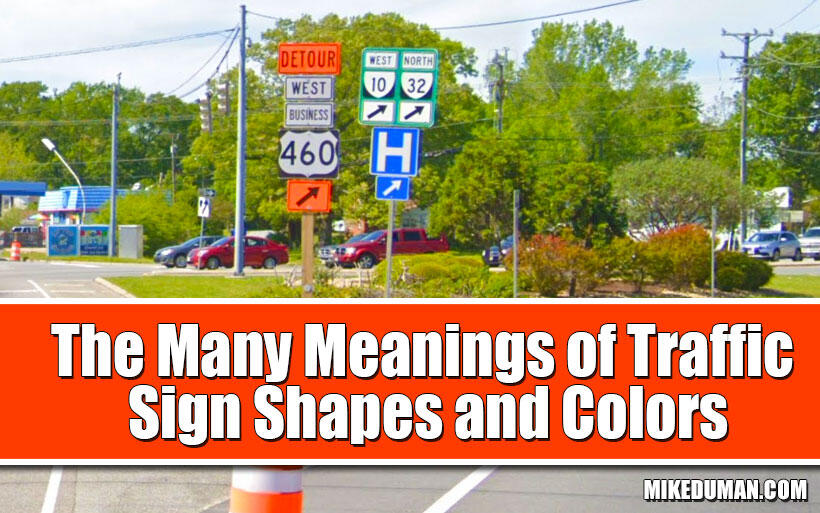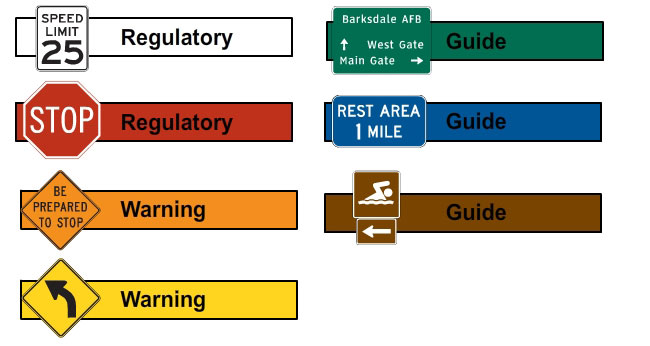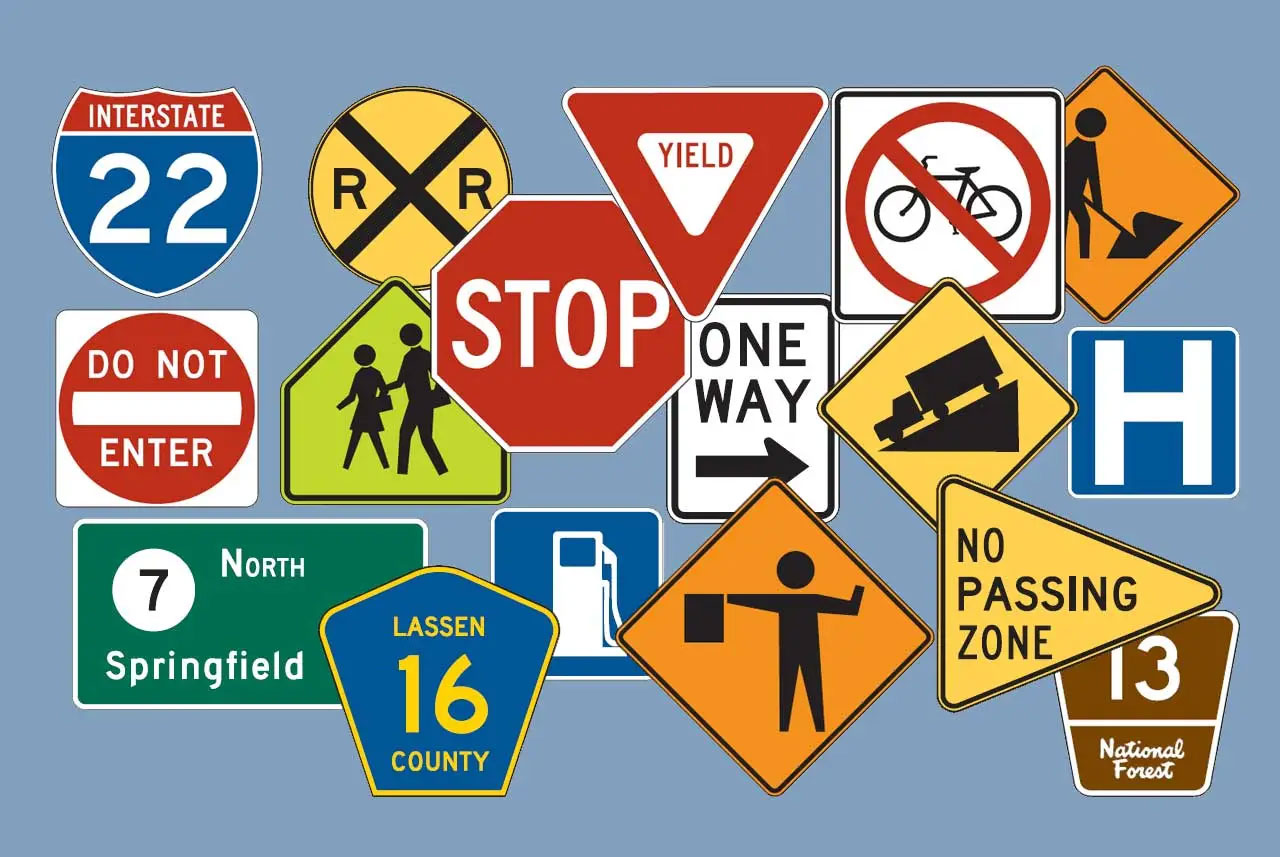
When it comes to the size, shape, color and messaging of roads signs, they convey a particular meaning that creates a message we absorb and obey consciously or subconsciously. Either way, road sign shapes and colors should not create distracted driving.
Let's look at the ways traffic signs convey information to keep drivers, pedestrians and bicyclists safe on our roadways.
Color counts
 Every color on non-commercial traffic signs means something. If you're looking for particular information, color coding allows you to focus on the particular meaning of a sign.
Every color on non-commercial traffic signs means something. If you're looking for particular information, color coding allows you to focus on the particular meaning of a sign.
What the colors mean:
- Red: Obey the sign, such as when you come to the stop sign.
- Yellow: Take caution, look around before you act. Think of a yield sign.
- Orange: Think of a "Construction Ahead" sign. These signs often reflect a temporary condition.
- Blue: This color conveys general information, often about road user services, such as "Rest Area Ahead." It is also used for evacuation routes.
- White: These signs are regulatory. Speed limit signs are a familiar example.
- Green: Green signs give you traffic instructions. The most common green signs are interstate signs explaining what's coming up at the next exit.
- Yellow-green: School zones and pedestrian crossings are the most common messages.
- Brown: Used for recreation and cultural sites, think, "Indiana Dunes State Park Ahead."
Shapes matter
 Not only does your brain interpret sign colors, but it also recognizes certain shapes as meaning certain things. Road sign shapes and colors together can a single mean meaning. Virtually every driver or pedestrian would immediately understand a red octagon as a stop sign even with no writing on it.
Not only does your brain interpret sign colors, but it also recognizes certain shapes as meaning certain things. Road sign shapes and colors together can a single mean meaning. Virtually every driver or pedestrian would immediately understand a red octagon as a stop sign even with no writing on it.
Here are common examples of road sign shapes:
- Round.: Round signs are regulatory. Again, the classic example is a stop sign, although many of them are eight-sided rather than perfect circles. Stop signs are the only octagonal sign, making them easily recognizable from behind. Railroad crossing signs are usually circular.
- Diamond: These are normally warning types of signs. Think of a "Road Work Ahead" sign. Yellow diamond shapes can signal deer crossings, a sharp curve ahead, and the anticipation of traffic signals.
- Rectangle: A rectangular sign guides you. Think of the green instructional signs on an interstate.
- Square: These signs inform you about services The most familiar would be the square blue signs before an exit with information about food and lodging. Squares are also used for announcing recreational facilities.
- House: A sign that looks like a small house warns you that you are entering a school zone.
- Chevron or shield: A chevron or shield shape identifies the road that you are on. A red, white and blue shield is used on interstates. Black and white squares with an interior shield shape are found on local routes.
- Triangle: A triangle point down is the most common yield sign. With the point at the top, it informs you about the road ahead.
Signs you don't often see
 Although they may use familiar shapes or colors, some signs give us unusual information.
Although they may use familiar shapes or colors, some signs give us unusual information.
Some examples include:
- Crossbuck signs: The crossbuck is an X-shaped sign at a railroad crossing. Legally, these are yield signs, which require you to stop at the tracks before proceeding.
- Yellow diamonds for lane changes: These signs, common during road work, show lanes being added or taken away from the flow of traffic.
- Narrow Bridge: The Narrow Bridge Ahead sign is a triangle with the base at the bottom instead of at the top. It shows two curves that look like parentheses side by side in the wrong direction to show the narrowing of the traffic lane. Similar signs using this shape include "Rough Road Ahead," "Dangerous Dip" and "Unguarded Level
- Crossing," warning of a gap in the median without an intersection.
- Slippery road: A yellow diamond sign shows a car with a swerving track signal that the roads may be slippery during severe weather. A related sign seen on highways is the "Bridge Ices Before Roadway," which is used to warn that bridges may be slippery and icy even if the road isn't.
Custom traffic signs
Custom traffic signs are used on private property to control traffic flow and parking. One of the most common is the "Handicapped Parking" sign found in virtually every parking lot.
Signs of the times
On roads across the United States, your vehicle can be legally moving as fast as 75 miles per hour in some locations. Because of that speed, any important information needs to quickly get through the filters that your brain uses to process messages. You simply don't have time to read every sign to find the information you need. For this reason, road authorities rely on familiar road sign shapes and colors to attract your attention.
